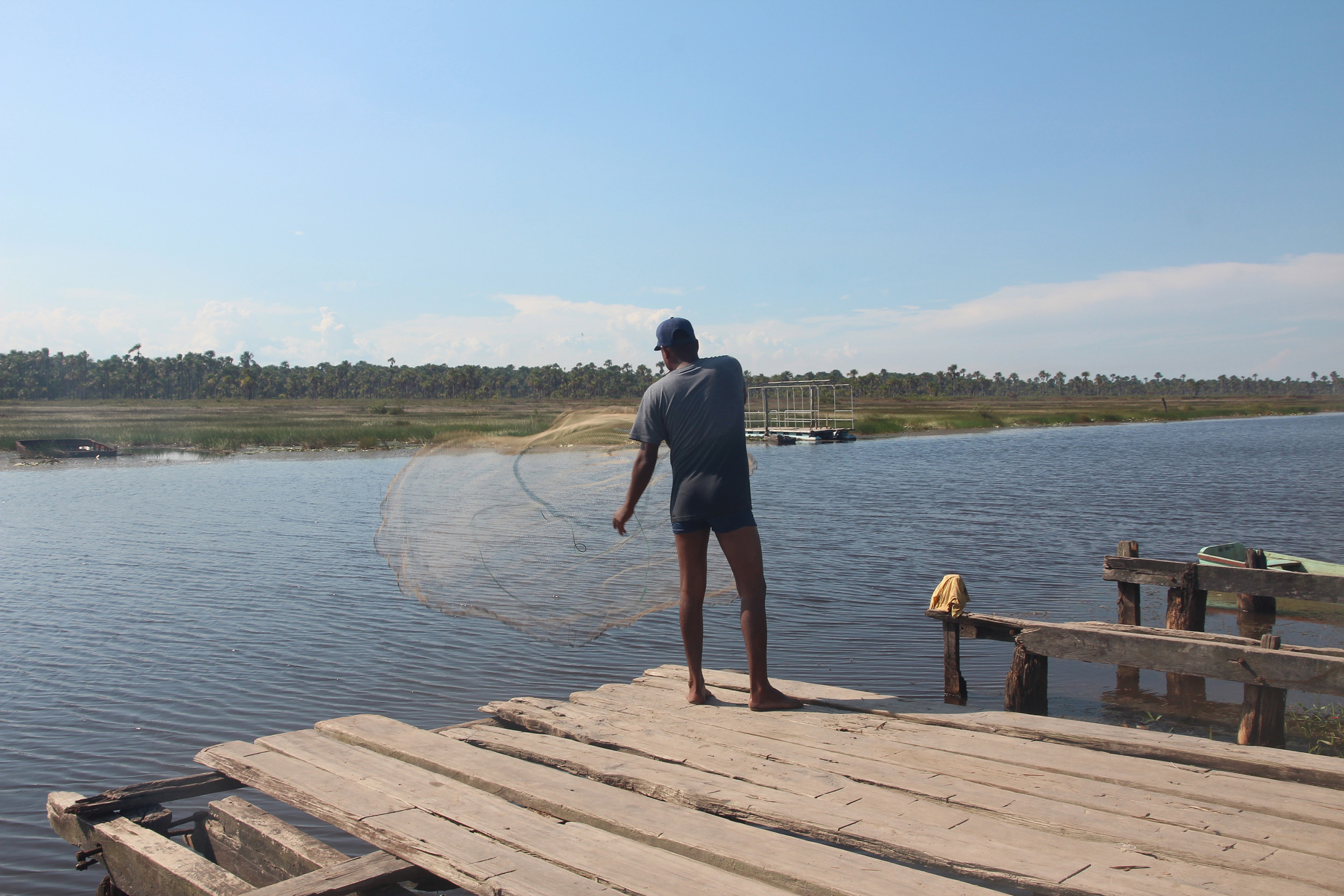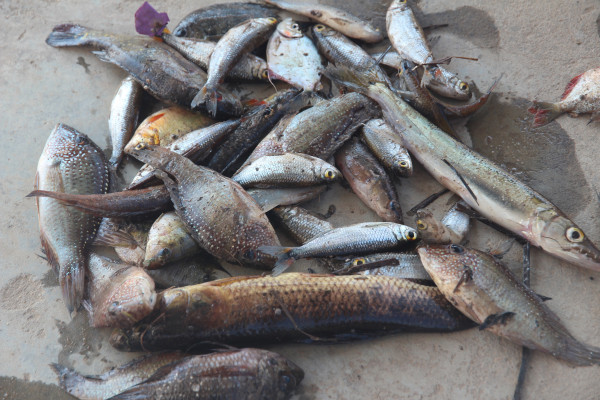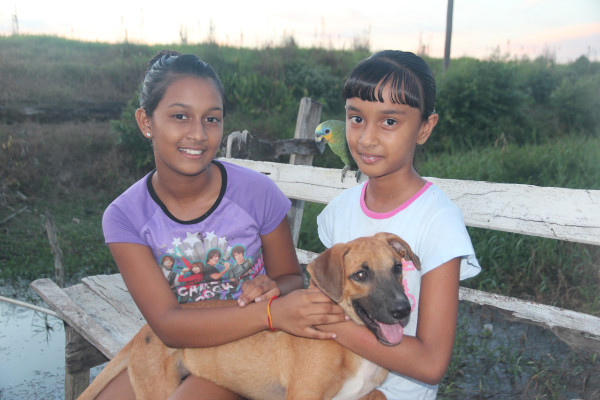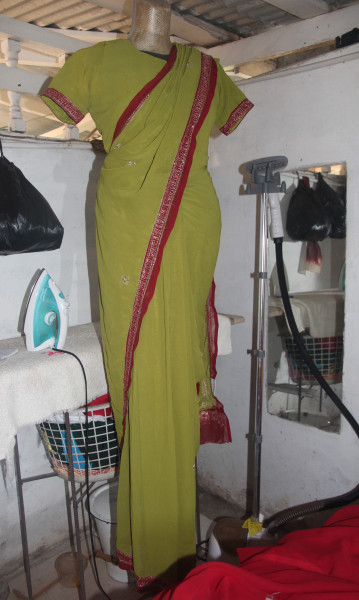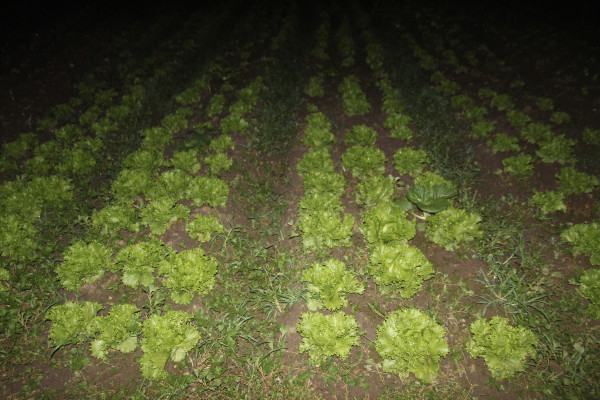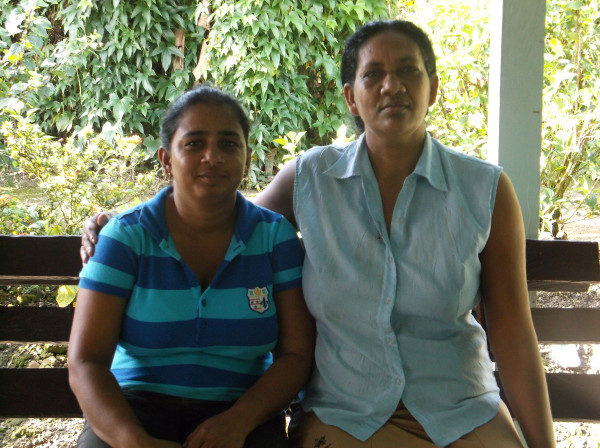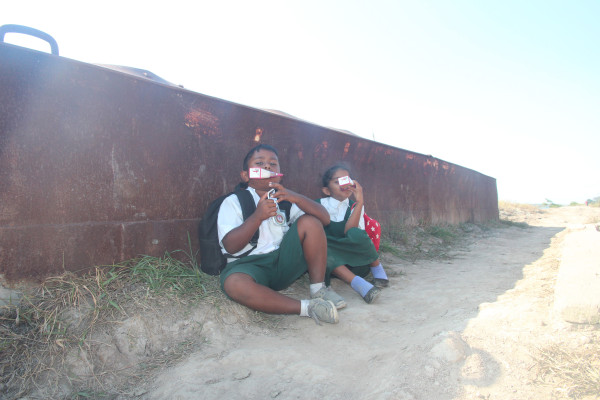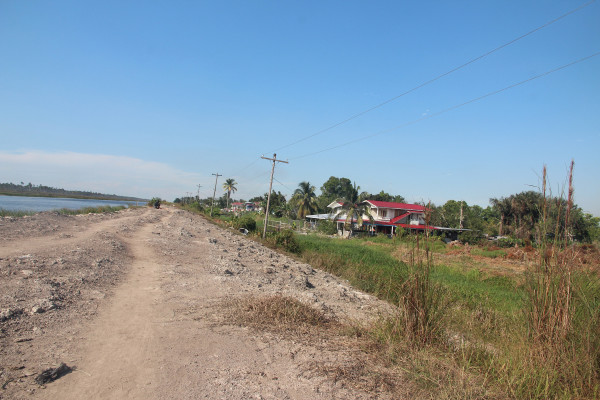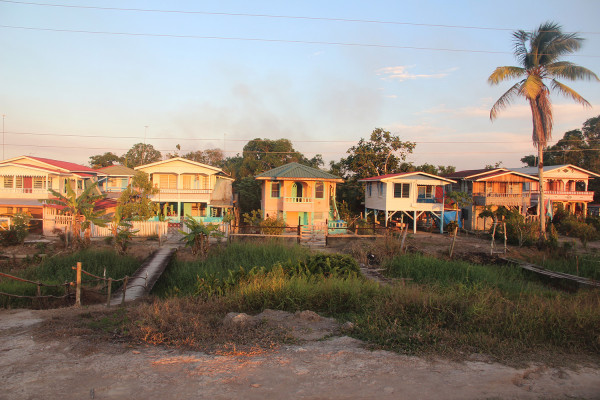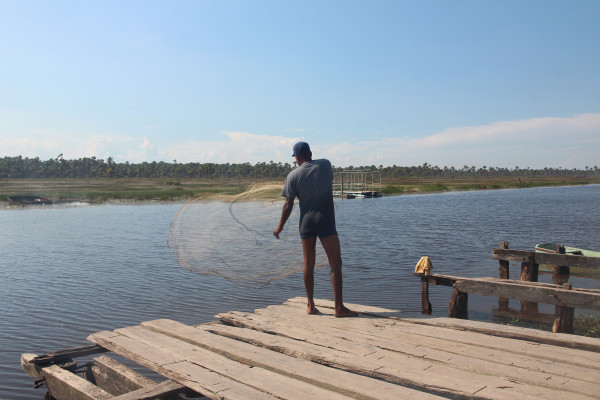A journey to the end of Canal Number Two Polder brings you to the conservancy dam where there is a shed and a few boats, which farmers use to access farmlands, tied to bridges. To the right of the dam you’d see two pontoons placed there by the Guyana Sugar Corporation (GuySuCo) to prevent persons from driving on the dam. But it isn’t until you get to the top of the dam that you realise there are houses lined along it, as far as the eye can see. The village here is called Conservancy Dam or Number 75.
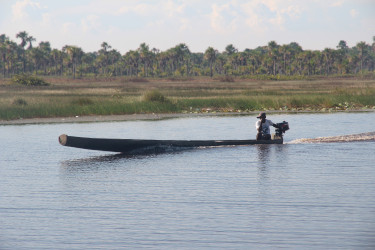
The reason for also calling the village Number 75, is because it is said that each lot is 75 rods in length. It is however a little community with a population of approximately 300.
Persons with vehicles use a track that runs at the back of their yards to get their vehicles in and out. Other villagers walk the mile long dam, or, as is also the custom here, use their boats to drive along the conservancy canal until they get to the public road.
Most villagers provide for themselves and family through the means of fishing, farming and hunting.
On the dam, we paused to watch Anthony Sumair throw his cast net and pull up a fish he called “dog fish” then add it to his catch of patwa, houri, sunfish and other fresh water fish. Turning right to enter the village the World Beyond Georgetown happened on two little children sitting flat on the dam in the shade of a pontoon finishing their Topco juices before continuing the long walk home.
Nirmala Singh, a seamstress, grew up in Number 75. The village, she said, has existed since the 1800s. Her husband’s grandmother, after coming from India to Guyana had settled in the village. “Most persons here are related either by blood or marriage; mostly Hindus live here,” she said.
“Many years ago the water from the conservancy was used for everything; we washed, cooked and used it for drinking too. Some persons still use it for the same purposes today,” she added.
As a little girl, she attended the Kawall Government School a few villages away which she walked to and from every day. “We used to play a lot of games you don’t see kids playing these days,” Nirmala lamented. “We made little doll houses out of grass and leaves and cooked in calabashes. Fruits were endless so our calabashes were always full. We never thought of having sweets with so much fruits around. Because of that persons were healthier. We even played ‘gam’ with milk tins instead of marbles and sometimes we used the Ite seeds. Oranges or limes with rocks was what we used to play [a game of] Jacks.”
Despite being a school dropout at just 13 years old, Nirmala had the desire to elevate herself and this saw her learning to sew. She later gained a certificate in sewing from a course she did.
Today, the seamstress sews just about anything from uniforms to saris to wedding dresses. Her husband, a farmer visits his farm every day using their boat to get there while she remains at home sewing and rearing her meat birds. On Sundays they take fruits (pineapples, oranges and tangerines) to sell at La Penitence Market. While there, she buys her greens from other vendors. Groceries are bought from the grocery vans that drive along the public road.
Although she enjoys a life of contentment, Nirmala wishes they can have a road built on the government reserve in front of their houses, especially for the schoolchildren. She said telephones are needed also. “These are necessities, not luxuries,” she said. Apart from that she maintains that the villagers live “really nice. When there’s a wedding or a funeral, everyone come together and help. We have everything up to date; electricity, water and internet. My village is beautiful and tranquil.”
Said Nirmala, “The sunsets here are amazing,” a view she boasts is even more beautiful when she’s in her verandah.
A little further in the village, in another yard of pretty flowers, lives Artie Dehaul. Twenty-one years ago when she got married she moved to Number 75. “The place was strange. People did most farming here. Living in front of a conservancy was scary, knowing it could breakaway at any time,” she said. Also a farmer, she plants along with her husband, papaw, pineapple, orange, mango, tangerine and watermelon on their farm, far into the conservancy. Apart from a life of farming, she’s also a vendor at the Stabroek and Bourda markets almost every day.
She also spoke of the cons of living in Number 75. “We need a proper road. When the rain falls, the dam is terrible to walk on. It’s really muddy. The children who walk to school have a mess to walk through and by the time they reach the end, you should see them. I does sorry for them. Some of them fall down in the mud and got to turn back. So we need a road here.
“Even the public road; when it get holes, all they doing it is patching here and there. When the rain falls and the road is flooded, you can’t see where the holes are and persons who driving, driving in them and it leaving them in expense for tyres. Because of the roads the hire car drivers refuse to come down here in the nights since its dark and we have no street lights.
“Other than the roads we need street lights for our children who got to go to lessons and for people who come from work in the nights,” she said.
Having street lights would also help with encounters with Labaria snakes that would frequent the area every now and again.
However, she there are still things about life here that excite. “If you had tell me before I had come here to live, that the conservancy dries up, I would never believe. The conservancy dries and when it dries, tractors drive through. People sometimes have picnics and bush cooks. One Easter time they even fly they’re kites there. People come from all over when the water drops—Georgetown, East Coast, West Coast—to catch fish,” said Artie. “When this happen, if the pipe cut-off, we punish for water and we have to conserve the little water we have.”
But this rarely happens and she’s only seen it a few times.
“But living here is really nice. This place is a very nice place. Nobody ain’t rowdy. Everybody nice here,” she said.
A few lots over, lives Hemwantie Sanchari and her husband. Her brother-in-law and his family live in the same yard also. She has lived here her entire life. During her girlhood days she recalls the dam being lined by trees on both sides.
As a little girl growing up in Number 75 Village saw her fetching water from the conservancy in saucepans to wash and cook before she prepared for school, but not before picking up cow dung. She too, attended the Kawall Government School and after school she daubed the bottom house. “On Fridays after school we went to pick orange, tangerine, mamey and grapefruit so they could take to the markets on Saturdays,” Hemwantie recalled. “When my grandparents left for the market, they left a long list of work for us to do. We had to give the house a general clean. On Sundays we (she and her siblings) got a general clean too. They [would] wash our hair and scrub us down.
“I had to prepare dinner for them when they got back from the market. I was only 13 then and would often cook catfish curry. I had to use the masala brick to grind on and scrub the floor with scraper. Children don’t know about that kind of thing now.
“When we went to school we write on slates and we carry our slates in a cloth handbag. We walk to school barefoot and when the sun hot, we run in the grass. If rain fall, you still got to reach to school and we used to cut sucker leaf [from banana or plantain trees] to shelter and walk to school. When you reach to school you skin still get wet but what you go do. One, one children had slippers on they foot and I use to wish I could get one but I never tell grandparents them anything. I was content; I know they couldn’t afford it.
“The children here today, got everything. Today is a nicer time to live in but living back then made us more mannerly and content.”
Hemwantie’s nieces, sitting in a hammock, listened keenly. “It has always been a nice village. It is quiet and everybody is friendly. The birds in the morning nice to listen to. I’ll always want to live here,” she added.
The sun was setting behind the savannahs in the distance and reflecting in the black water while children and people walking through the dam called out to each other as the World Beyond Georgetown left. Villagers had tended their kitchen and flowering gardens and were settling down to watch the amazing sunset.
